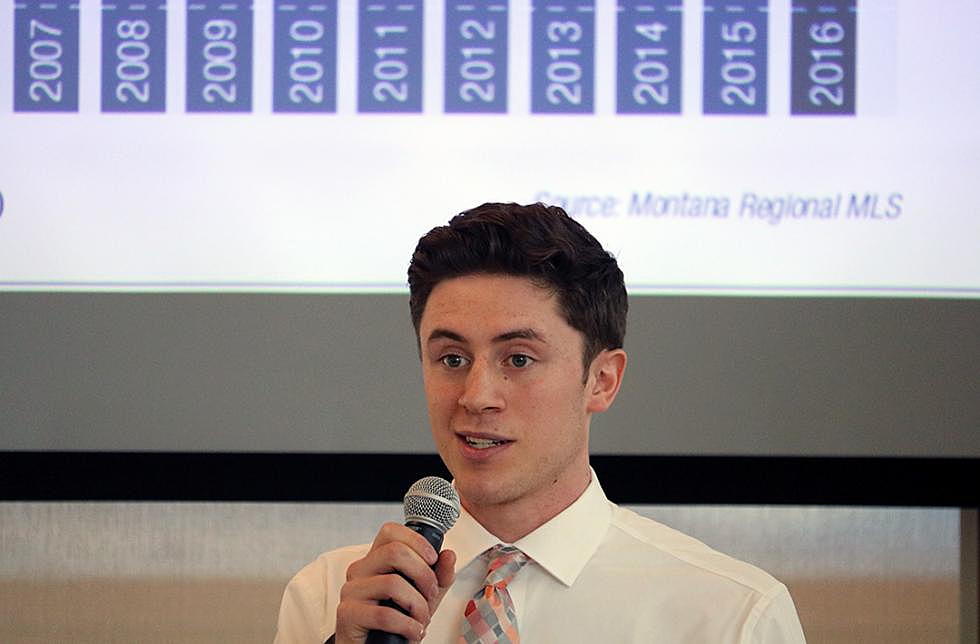
UM honors students present solutions to Missoula’s affordable housing issues
When Teigan Avery and Matt Malloy set out to finalize seven months of research on the challenges and solutions to Missoula's affordable housing crisis, they were confronted with one last anecdotal experience.
It came from a University of Montana graduate student who spent her first two months in Missoula living in a tent. The reason? She couldn't find an affordable place to live.
“That was something that touched us, because we know that everyone in Missoula deals with some aspect of the affordable housing issue we're facing today,” said Malloy.
Malloy and Avery joined several other University of Montana students on Tuesday night responding to a challenge laid down by the city in partnership with the Davidson Honors College: Research the city's housing issues and suggest ways to solve it.
The solutions took different routes. One team sought to drive down prices by focusing on small-scale living while the other encouraged the city to increase the supply of affordable rentals by simplifying the construction of Accessory Dwelling Units.
While they admit that doing so may be controversial, they believe it has worked in other mountain cities facing rising home prices and a shortage of buildable space.
“Without affordable rent, specifically, you can't save enough of your income to put a down payment on a home, or ever own a home affordably,” said Avery. “Finding a solution to affordable rent, and making sure those just starting their adult lives can live comfortably, is critical.”
Affordability offers other social benefits as well, including a stronger local economy. If residents have more income to spend outside of rent or a mortgage, their spending power lifts the incomes of other businesses.
But the rising cost of housing has become unaffordable for many local residents, with 47 percent spending more than 30 percent of their income on housing, according to the Missoula Organization of Realtors.
Home prices have risen each of the past seven years, setting a record for median prices this year at $268,000. And while rent prices ticked up only slightly this year, the students believe affordability remains an issue there as well.
University students agreed with housing experts in that Missoula's shallow housing stock is partially to blame for rising prices. Building small-scale homes on smaller lots could offer first-time homebuyers an affordable way to become owners, while simplifying ADUs could expand the rental supply, and do so in way that doesn't promote urban sprawl.
But both teams also found that city regulations deter both solutions – regulations that include conditional use permits, requirements for off-street parking, occupancy requirements and setbacks.
“All those prohibitive steps make it unaffordable to do these projects, and we really want to incentivize developers to take on these smaller projects,” said Clare Weiler, who helped inform the small-scale living solution. “There's a lot of prohibitive red tape.”
Challenged with the issue, the students offered an array of solutions, some conventional and some outside the box, including a proposed “land-value tax” that could be used to fund affordable housing projects.
The city should also launch a campaign aimed at “normalizing” ADUs and work to remove existing regulatory barriers. To address its own housing shortage, Portland focused in part on ADUs and reduced regulations, resulting in what Malloy described as an “exponential increase” in housing availability.
“We'd like to see the city immediately start a public support campaign to raise awareness, not just around homeowners interested in putting an ADU on their property, but also with neighbors, so neighbors understand that when an ADU gets put on their neighbor's lot, it's not at their expense,” said Malloy. “And once we have public support behind ADUs, we'd like to see the city remove zoning requirements.”
